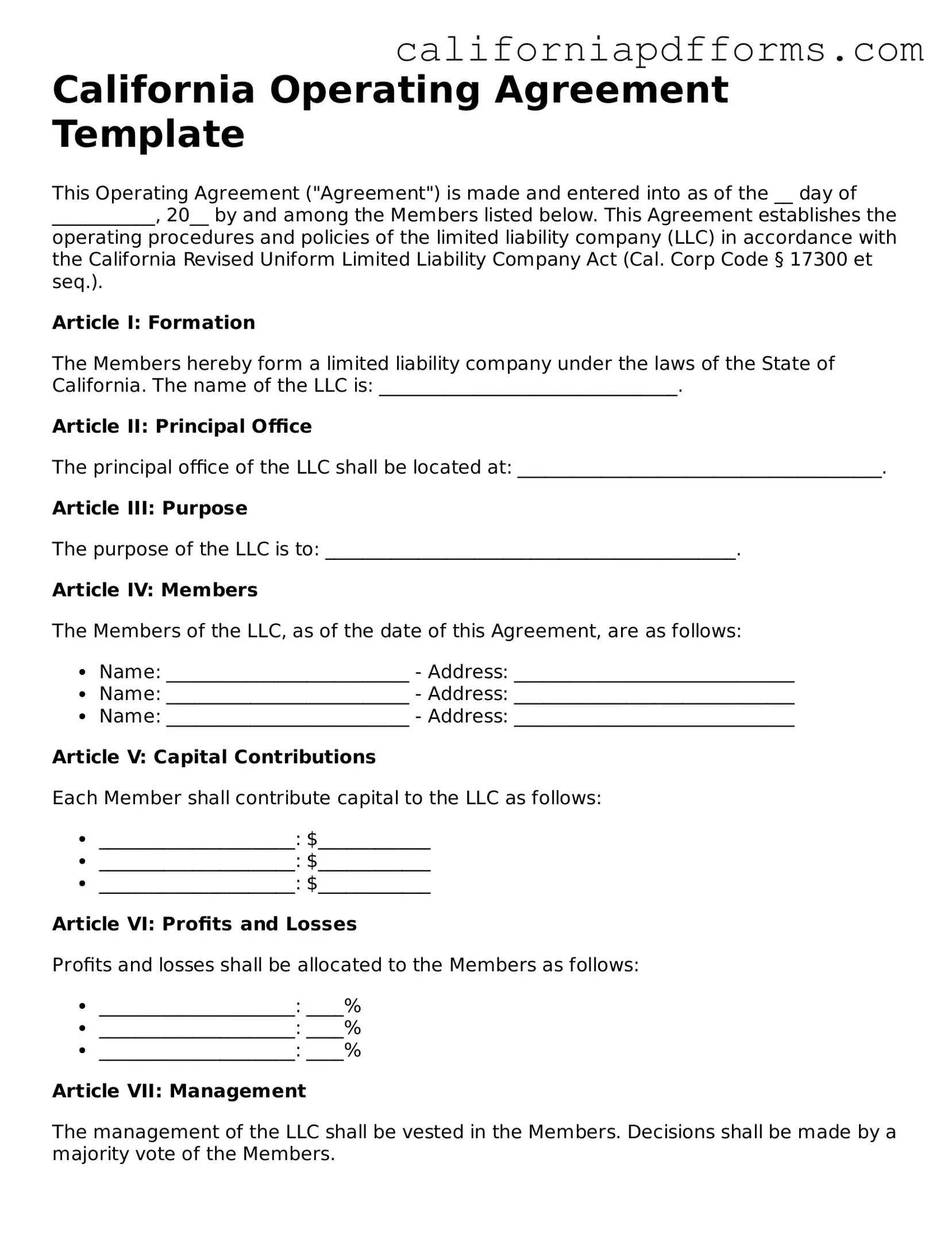What is a California Operating Agreement?
A California Operating Agreement is a legal document that outlines the management structure and operating procedures of a limited liability company (LLC) in California. This agreement serves as a foundational document for the LLC, detailing the rights and responsibilities of its members, how profits and losses will be distributed, and the rules for decision-making.
Why is an Operating Agreement important?
Having an Operating Agreement is crucial for several reasons:
-
It helps prevent misunderstandings among members by clearly defining roles and expectations.
-
It protects the limited liability status of the LLC, ensuring that personal assets are safeguarded from business debts.
-
It provides a framework for resolving disputes, which can save time and money in the long run.
Who should create an Operating Agreement?
All members of an LLC should participate in creating the Operating Agreement. Whether the LLC has two members or many, each individual’s input is valuable. This collaborative approach fosters a sense of ownership and commitment among members.
What should be included in the Operating Agreement?
An effective Operating Agreement typically includes the following elements:
-
The name and purpose of the LLC
-
The names and addresses of the members
-
The management structure, specifying whether it will be member-managed or manager-managed
-
Details on capital contributions and profit-sharing
-
Procedures for adding or removing members
-
Guidelines for resolving disputes
Is an Operating Agreement legally required in California?
While California law does not require LLCs to have an Operating Agreement, it is highly recommended. Without it, the LLC may be governed by default rules set by the state, which may not align with the members’ intentions. An Operating Agreement provides clarity and helps avoid potential conflicts.
Can an Operating Agreement be amended?
Yes, an Operating Agreement can be amended. Members may find it necessary to update the agreement as the business evolves. Typically, the amendment process should be outlined within the original Operating Agreement, detailing how changes can be made and what majority is needed for approval.
Where can I find a template for a California Operating Agreement?
Templates for a California Operating Agreement can be found online through various legal websites and resources. However, it is advisable to consult with a legal professional to ensure that the agreement meets the specific needs of your LLC and complies with state laws.
